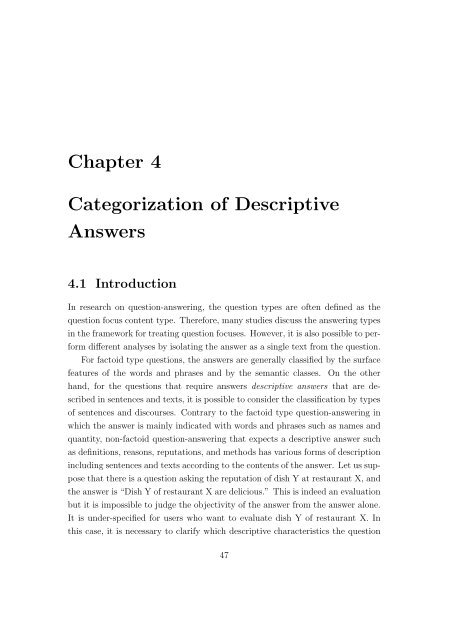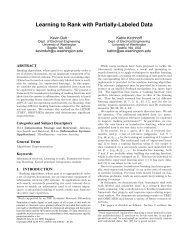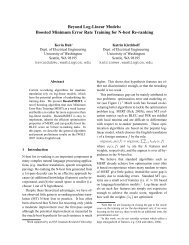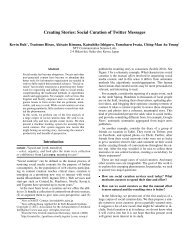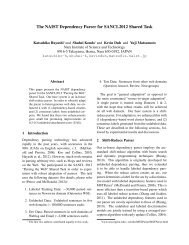file - ChaSen - 奈良先端科学技術大学院大学
file - ChaSen - 奈良先端科学技術大学院大学
file - ChaSen - 奈良先端科学技術大学院大学
- No tags were found...
Create successful ePaper yourself
Turn your PDF publications into a flip-book with our unique Google optimized e-Paper software.
Chapter 4Categorization of DescriptiveAnswers4.1 IntroductionIn research on question-answering, the question types are often defined as thequestion focus content type. Therefore, many studies discuss the answering typesin the framework for treating question focuses. However, it is also possible to performdifferent analyses by isolating the answer as a single text from the question.For factoid type questions, the answers are generally classified by the surfacefeatures of the words and phrases and by the semantic classes. On the otherhand, for the questions that require answers descriptive answers that are describedin sentences and texts, it is possible to consider the classification by typesof sentences and discourses. Contrary to the factoid type question-answering inwhich the answer is mainly indicated with words and phrases such as names andquantity, non-factoid question-answering that expects a descriptive answer suchas definitions, reasons, reputations, and methods has various forms of descriptionincluding sentences and texts according to the contents of the answer. Let us supposethat there is a question asking the reputation of dish Y at restaurant X, andthe answer is “Dish Y of restaurant X are delicious.” This is indeed an evaluationbut it is impossible to judge the objectivity of the answer from the answer alone.It is under-specified for users who want to evaluate dish Y of restaurant X. Inthis case, it is necessary to clarify which descriptive characteristics the question47


